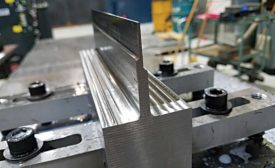Home » lightweighting
Articles Tagged with ''lightweighting''
Analyzers Aid Automotive Lightweighting Efforts
The adoption of advanced materials is creating challenges for materials analysis and quality control across the automotive supply chain.
July 16, 2020
High-Speed Rail Demands Light Railcars
Carbon-fiber composite is on track for big growth in the rail sector
June 9, 2020
Carbon-Fiber Composites Grow in Popularity
Adhesives and fasteners can be used to assemble many types of composite parts
June 3, 2019
Never miss the latest news and trends driving the manufacturing industry
Stay in the know on the latest assembly trends.
JOIN TODAY!Copyright ©2024. All Rights Reserved BNP Media.
Design, CMS, Hosting & Web Development :: ePublishing











